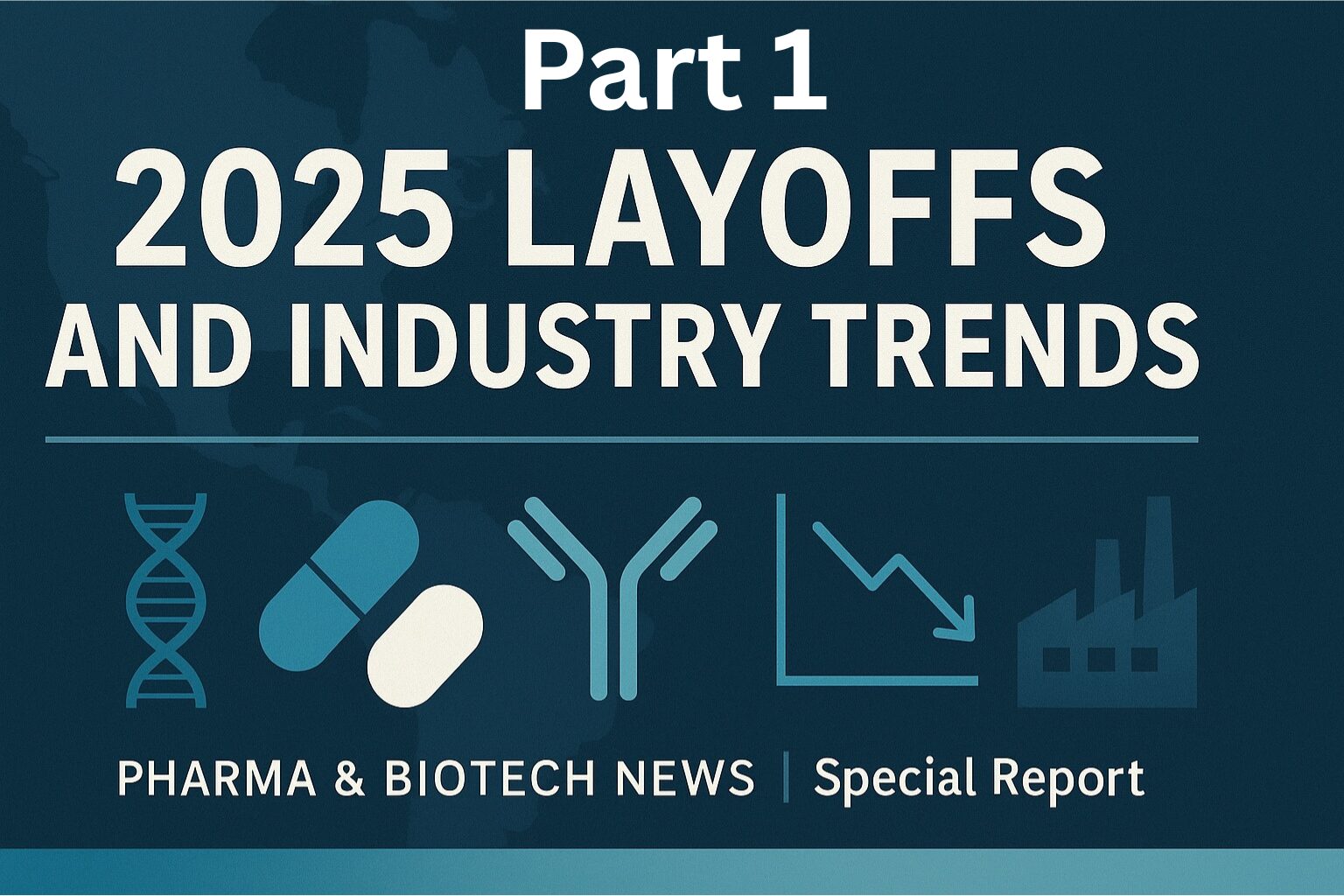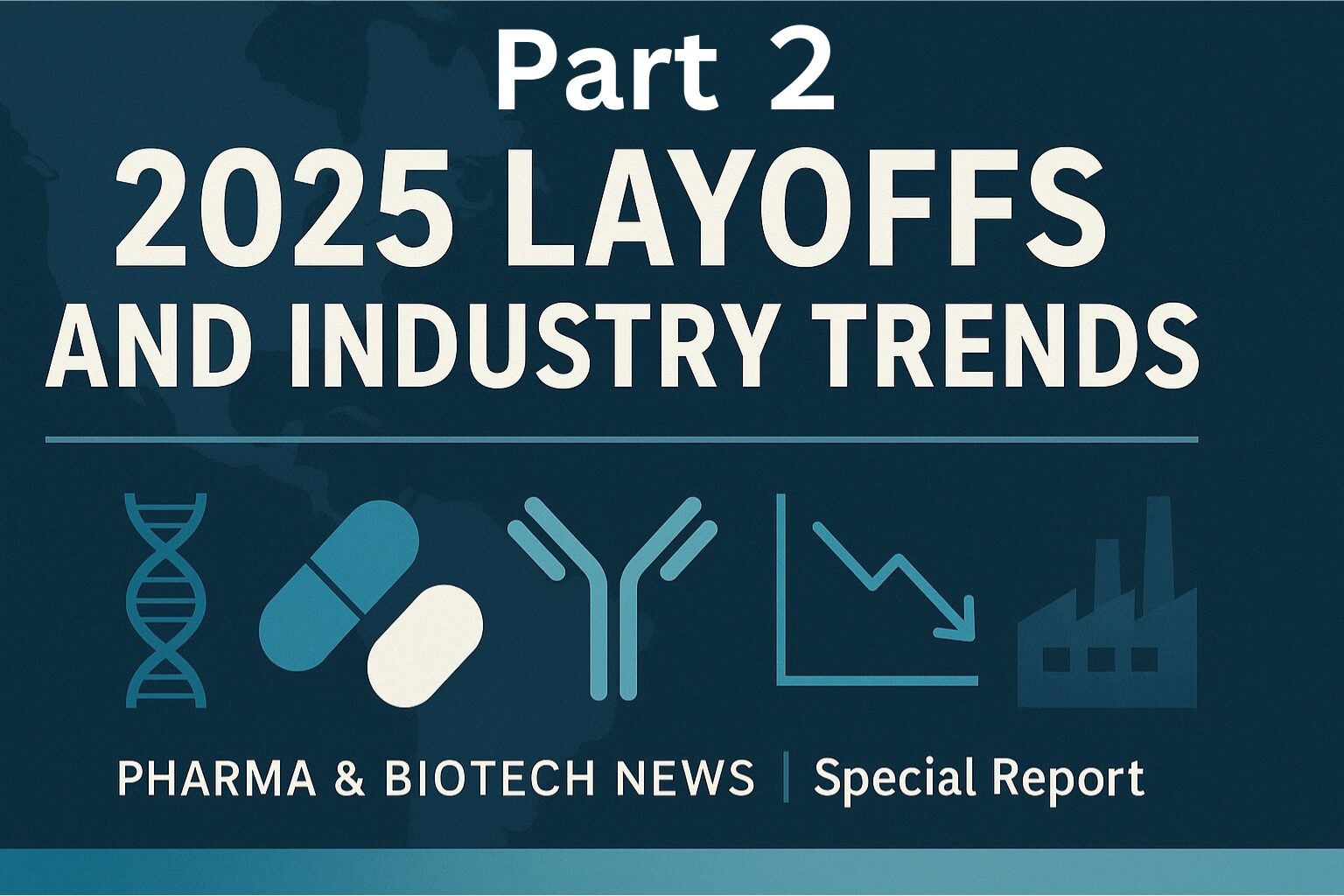Category: Pharma & Biotech NEWS | Series “Reading 2025 Layoffs” — Part 2
Key Takeaways
- Oncology leads the reallocation: Cell therapies and solid tumors force a focus on indication picking, manufacturability, and reimbursement realism.
- Neuroscience/rare demand long-capital endurance: Long POC distance means trial design and biomarker strategy directly shape headcount plans.
- Metabolic/obesity & ophthalmology are event-sensitive: Late-stage outcomes and access dynamics trigger rapid organizational redesign.
Purpose
This article reads 2025 workforce actions by disease area, extracting cross-cutting causes and practical levers for hiring, outsourcing, partnering, and site strategy. Rather than company-by-company anecdotes, we present portable decision frameworks.
Oncology (Solid & Hematologic)
1) Cell therapies (autologous/allogeneic CAR-T, TIL)
- Manufacturing bottlenecks: COGS, throughput, and QC stability drive commercial viability—and thus workforce configuration.
- Indication strategy: Solid tumors carry TME/heterogeneity/toxicity hurdles. Narrow & winnable indications dampen organizational volatility.
- Reimbursement: Pricing & outcomes contracts and site readiness must be designed in from the start.
2) Targeted/next-gen modalities
- Degraders/targeted agents: Biomarker-linked P2 quality drives expansion vs. contraction.
- Combinations: Operational complexity (supply, safety, IP) reshapes clinical and medical teams.
| Challenge | Org Implication | Layoff-resilient Tactic |
|---|---|---|
| Scale/quality | Manufacturing/QC/supply re-allocation | Phased in-house + KPI-bound CDMO model |
| Over-broad indications | Pipeline pruning in discovery/preclinical | Focus → fast POC → staged expansion |
| Access uncertainty | Lean MA/HEOR pending clarity | Early value dossiers and pricing logic |
Neuroscience / Rare Diseases
- Time-to-POC risk: Negative readouts hit harder; statistical design and sample discipline are capital-efficiency levers.
- Biomarker stack: Imaging, fluid, and digital composites to reach earlier POC; workforce shifts into biostats/data science.
- Rare gene/RNA therapies: CMC/regulatory clarity dominates headcount planning.
Tip: Lock natural-history/endpoint strategy early; run small, high-quality trials; partner non-core assets sooner.
Immunology/Inflammation
- Thin differentiation: Crowded standards make negative trials trigger rapid downsizing.
- Real-world value: Route, monitoring burden, and adherence shape adoption and staffing.
Metabolic/Obesity & Endocrine
- Event-sensitive: P3/approval/market-supply dynamics alter commercial and manufacturing staffing swiftly.
- Access speed: Complication-reduction data and payer alignment drive elasticity in pricing and org scale.
Ophthalmology
- Big peaks & valleys: Late-stage outcomes/approvals swing org design within quarters.
- Endpoint validity: Surrogate endpoints and KOL/regulatory alignment determine resilience.
Other Areas (Cardio, ID, Women’s Health)
- Cardio: Outcome-trial scale favors partnerships/co-promo planning from the outset.
- Infectious disease: Antibiotic economics push workforce optimization unless pull incentives exist.
- Women’s health: Regulatory/access/demand-building triad underpins small-but-mighty business designs.
Cross-cutting Triggers (Data, Access, Supply)
- Data events: Positive → expansion; negative → rapid pruning/outsourcing.
- Pricing & reimbursement: Payer alignment pace governs commercial/medical staffing.
- Supply & quality: Scale-up reliability sets manufacturing/QA/QC workforce cadence.
Practical Checklists (Keep Teams Intact)
| Area | Priority KPIs | Org Design Cue |
|---|---|---|
| Oncology (cell Tx) | Yield/TAT/COGS | Phased make-or-buy; focus indications to POC |
| Neuroscience | Predictive biomarkers | Reinforce stats/DMC; externalize exploratory work |
| Immunology | Real-world outcomes/adherence | RWD-linked medical plans |
| Metabolic/Obesity | Supply stability; expansion evidence | Commercial-MFG-HEOR triad team |
| Ophthalmology | Surrogate endpoint validity | Early KOL/regulatory convergence |
Conclusion: Diagnose by Disease Structure
Workforce actions mirror disease-specific constraint maps. To stabilize or grow teams, combine (1) shortest-path-to-POC designs, (2) manufacturability & supply realism, and (3) payer-credible value stories. Next up, we pivot from “disease” to “modality” and derive a capital-efficiency equation across manufacturing, regulatory, and commercial lenses.
Next up: “Part 3 | Modality-by-Modality: Manufacturing, Regulatory, and Commercial Realities.”
This article was edited by the Morningglorysciences team.











Comments